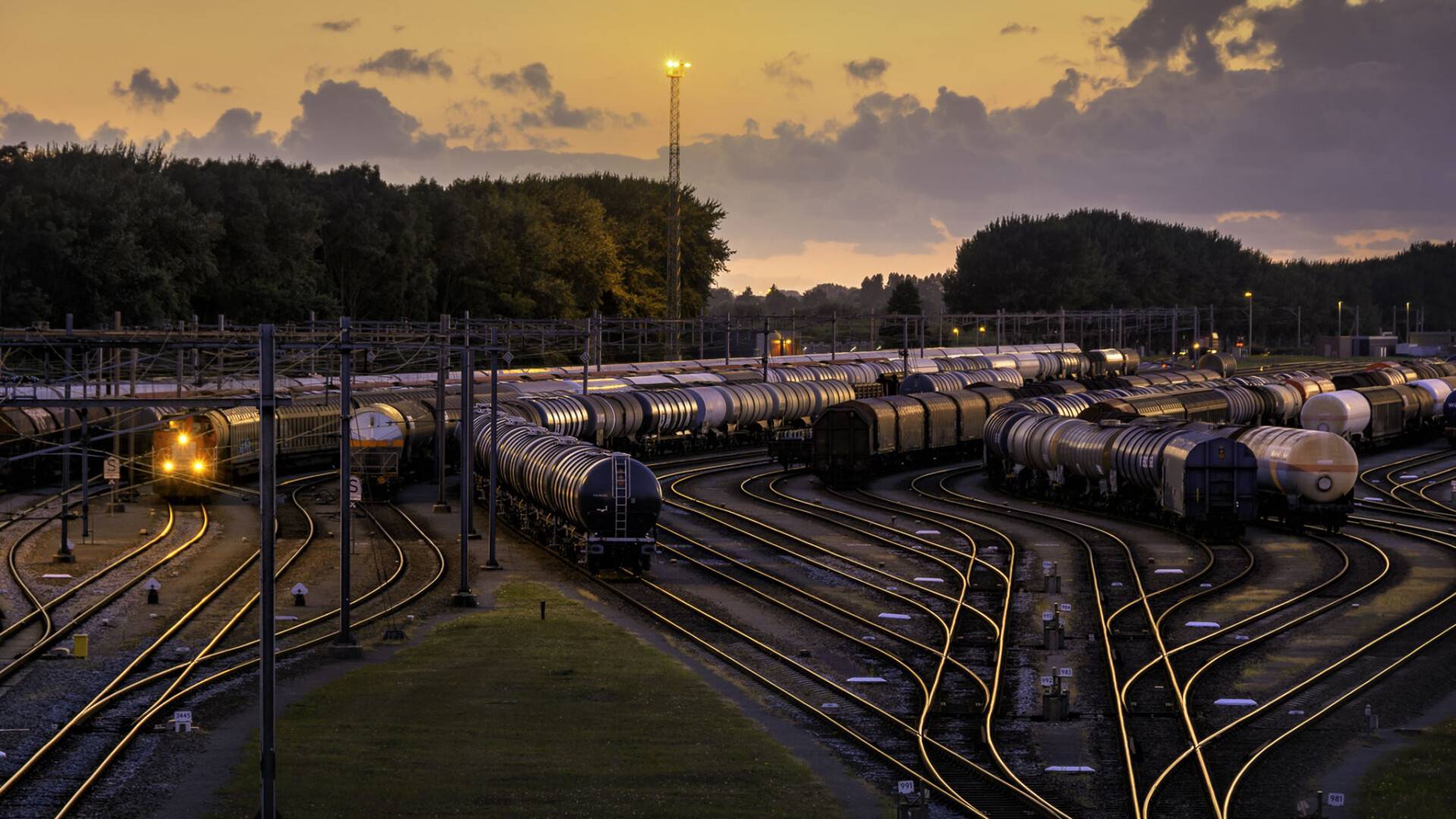Wagon load transport
Wagon load transport
Don’t have enough cargo for a complete train but still want to benefit from rail transport? Wagon load transport might be the solution. A well-thought-out ‘hub and spoke’ system connects individual business locations and industrial centers with an extensive network of daily services, making destinations throughout Europe quickly and efficiently accessible.
Users of the wagon load network often come from the steel and (petro) chemical industries. The wagon load network is also frequently used for transporting (hygiene) paper, cellulose, wood, white goods, and various palletized goods such as beverages and animal feed. The advantage of wagon load transport is the relatively larger volume and higher weight that can be transported compared to road transport. For example, a sliding wall wagon has space for 167 m3 and about 63 tons.
How does wagon load transport work?
The concept behind wagon load transport is as simple as it is effective. At fixed times, wagons that have been loaded or unloaded at companies with rail connections are collected and transferred to a marshalling yard (hub). There, the wagons are formed into trains with the same destination. The trains can consist of different types of wagons, hence the name ‘mixed train’. Another commonly used term for wagon load transport is unit cargo transport.

In the Netherlands, the Kijfhoek sorting station serves as the hub for the European wagon load network of DB Cargo, by far the largest provider of wagon load transport. Kijfhoek is connected several times a day with sorting stations in Antwerp, Ghent, Hagen, and Cologne. Through these foreign ‘hubs’, the wagons travel further to their final destination. Sometimes this means a transfer to a train that serves rail connections in the immediate vicinity of the hub. In other cases, it requires a connection to a train to a more distant hub.
Advantages of wagon load transport
Bundeling
A key feature of wagon load transport is the bundling of wagons or groups of wagons from multiple customers into complete trains. The individual wagons or groups of wagons from companies all over the Netherlands are gathered and assembled into complete trains to the destination country. Once arrived in the destination country, the individual wagons or groups of wagons are delivered to the individual recipients via a marshalling yard. Wagon load transport runs according to a fixed schedule, making the service times predictable for customers.
Higher weight, larger volume
An advantage of wagon load transport over road transport is the larger volume and higher weight that can be transported. A sliding wall wagon has space for 167 m3 and about 63 tons. Wagon load transport can involve all kinds of goods that are transported by rail, ranging from tiles to refrigerators, from toilet paper to chemicals. The trains can consist of different types of wagons, hence the name ‘mixed train’. Another commonly used term for wagon load transport is unit cargo.
Public loading and unloading area
Wagon load transport usually takes place between companies that have a rail connection. If the sending or receiving company does not have its own rail connection, they can use a nearby public loading and unloading area. This is a piece of public track, usually located on an industrial estate, with paving next to the track. Individual wagons are placed here on request, after which the cargo is transferred between the wagon and truck using a forklift.
Terminal-terminal
The intermodal rail operator usually limits their services to transport between two rail terminals. The pre- and post-transport by road and the handling of the loading unit are not provided by them. Most customers of intermodal rail operators are therefore logistics service providers or shipping companies that do have loading units and can handle the pre- and post-transport. Click edit button to change this text. Lorem ipsum dolor sit amet, consectetur adipiscing elit. Ut elit tellus, luctus nec ullamcorper mattis, pulvinar dapibus leo.
